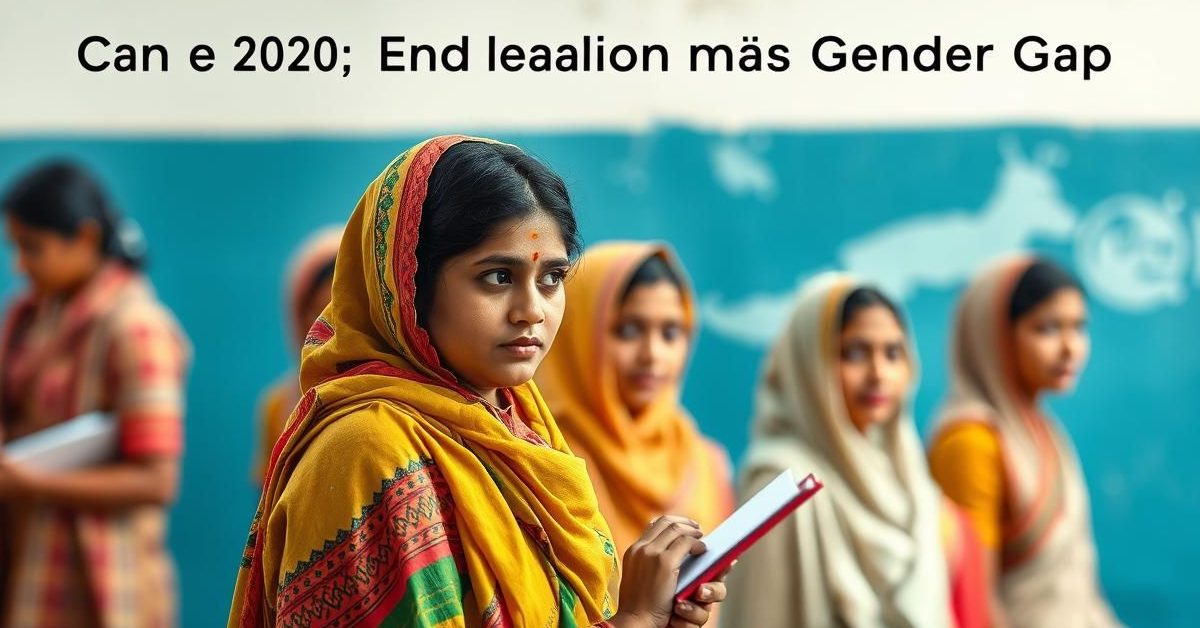The National Education Policy (NEP) 2020 aims to bridge India’s gender gap in education, a commitment underscored by efforts to empower girls and women in line with global initiatives like Malala Day.
NEP 2020: A Transformative Vision
India’s National Education Policy (NEP) 2020 marks a significant shift, replacing the 1986 policy with a comprehensive framework for both school and higher education. Its core objective is to make education in India more inclusive, equitable, holistic, multidisciplinary, and flexible.
The policy aligns with global Sustainable Development Goals (SDG) – specifically SDG 4, which ensures quality education for all, and SDG 5, focusing on gender equality. Key areas of focus include improving access and equity, refining curriculum, enhancing infrastructure, and promoting gender sensitisation.
Addressing School Dropout Rates for Girls
While India has made strides in girls’ enrollment, especially after the Right to Education Act of 2009, school dropout rates remain a concern. Data from 2021-22 shows a significant drop in secondary education, with 12.3% of girls discontinuing their studies.
To combat this, NEP 2020 targets a 100% Gross Enrolment Ratio (GER) in school education by 2030. Initiatives include establishing a Gender Inclusion Fund (GIF) for states to build safe infrastructure like hostels and toilets. Additionally, Kasturba Gandhi Balika Vidyalayas (KGBVs), residential schools for girls from disadvantaged backgrounds, will be expanded.
Girls are recognized as a Socio-Economically Disadvantaged Group (SEDG) under the NEP. Measures like Conditional Cash Transfer (CCT) and transportation support (e.g., bicycles) are proposed to incentivize their education and reduce dropouts. The policy also includes transgender individuals in this category, though further concrete steps for marginalized communities are needed.
Bridging the Digital Divide and Family Sensitisation
The NEP advocates for gender sensitisation among faculty, counsellors, and students. However, extending this awareness to families is crucial, as many parents may unknowingly prioritize household chores over girls’ education. Families need to understand the profound importance of education and gender equity for their daughters’ future.
While promoting online education, the NEP faces the challenge of India’s gendered digital divide. The 2019-20 National Family Health Survey (NFHS-5) revealed that only one in three women use the internet, compared to 57% of men, with this gap widening in rural areas. Addressing this requires ensuring equal access to computers, mobile phones, and internet facilities at both institutional and individual levels.
Furthermore, the curriculum will integrate gender sensitivity, sex education, and menstrual health awareness. This aims to empower girls, especially in rural areas, by informing them about their legal, financial, and digital rights, fostering self-reliance.
Enhancing Women’s Role in Higher Education and Leadership
The NEP encourages Higher Education Institutions (HEIs) to improve gender balance in admissions. This will involve trained social workers, counsellors, and teachers mediating between parents and HEIs, especially for women pursuing higher studies. Building more government-run HEIs in smaller towns can also alleviate parental concerns about sending daughters far from home.
Ensuring safe infrastructure, like clean toilets and childcare facilities within HEIs, is vital. Robust institutional mechanisms to address sexual harassment, along with medical care and counselling services, are also essential. Strict implementation of anti-ragging and anti-sexual exploitation measures through dedicated units is paramount.
Despite a high percentage of women teachers in primary schools, their representation significantly drops in leadership roles within secondary and higher education. This highlights persistent structural and institutional barriers preventing women from reaching top positions, underscoring the need for greater female representation in educational leadership and policymaking.
Focusing on Girls’ Health and Nutrition
The NEP 2020 emphasizes overall child health, but a specific focus on girls’ nutritional needs is crucial. High rates of anaemia among young girls and adolescents, as per NFHS-5, necessitate better nutritional care, particularly through improved midday meals in schools. Addressing gendered food habits, early marriage, pregnancy, and menstrual health impacts is vital for their holistic well-being.
Key Takeaways for Effective Implementation
- The NEP 2020 aims for 100% Gross Enrolment Ratio (GER) in schools by 2030, supported by Gender Inclusion Funds and expanded residential schools.
- Bridging the digital divide and sensitizing families are crucial for girls’ equitable access to education and future opportunities.
- Greater representation of women in educational leadership and addressing health disparities like anaemia are vital for true gender equity.
Achieving true gender equity through the NEP 2020 requires sustained engagement with communities and non-governmental agencies. Integrating gender modules into teacher education and showcasing diverse women role models in the curriculum are crucial steps towards normalizing women’s contributions across various fields. The policy’s success ultimately hinges on diligent and thoughtful execution on the ground.















